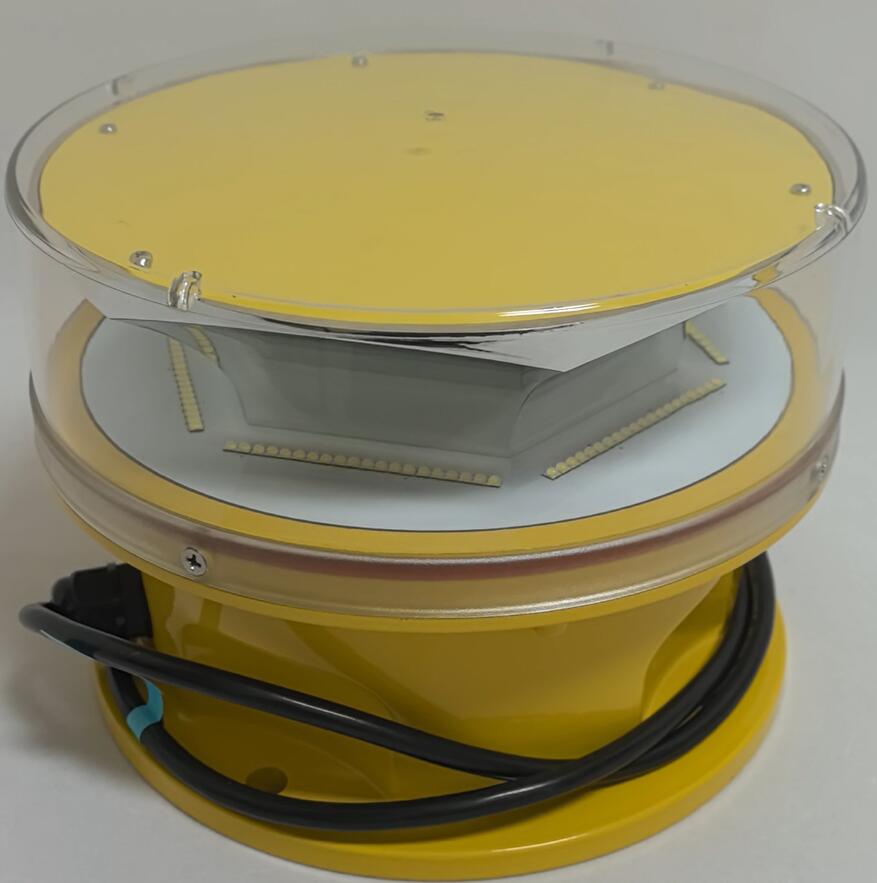LED Obstruction Lights FAA Compliance: Ensuring Aviation Safety Through Regulated Illumination
In the complex airspace of modern aviation, LED obstruction lights FAA compliant systems serve as critical safety components that protect both airborne vehicles and ground structures. The Federal Aviation Administration (FAA) establishes rigorous standards for these lighting systems, ensuring consistent visibility and collision prevention across U.S. airspace.
This comprehensive guide examines LED obstruction lights FAA regulations, their technological implementation, and their vital role in maintaining aviation safety infrastructure.
The FAA's Role in Obstruction Lighting Standards
The FAA's Advisory Circular (AC) 150/5345-43J establishes the current specification for LED obstruction lights FAA compliance, covering:
Light intensity requirements
Flash characteristics
Color specifications
Photometric distributions
Physical durability standards
| led obstruction lights faa |
These standards apply to:
Permanent structures exceeding 200 feet AGL
Temporary obstructions (construction cranes)

Wind farms and telecommunication towers
Buildings near airport approach paths
Types of FAA-Compliant LED Obstruction Lights
1. L-810 (Low-Intensity Red Obstruction Lights)
Steady-burning red lamps
Used on structures <200 feet
32-candela minimum intensity
2. L-864 (High-Intensity White Obstruction Lights)
Flashing white strobes (40 flashes/minute)
Required for structures >500 feet
20,000-candela minimum intensity
3. L-856 (Medium-Intensity Dual Lighting Systems)
Combination red/white systems
White flashing during day (20,000 cd)
Red flashing at night (2,000 cd)
4. L-880 (Medium-Intensity White Obstruction Lights)
Pure white flashing system
Alternative to L-856 systems
20,000-candela output
Key FAA Compliance Requirements
1. Photometric Performance
Precise vertical/horizontal light distribution
Minimum/maximum intensity thresholds
Color chromaticity coordinates
2. Physical Durability
Corrosion-resistant materials
-40°C to +55°C operational range
Vibration and impact resistance
3. Electrical Safety
Surge protection
Short-circuit prevention
Ground fault protection
4. Maintenance Features
Fault indication systems
Easy-access components
Tool-less servicing where possible
Technological Advantages of LED Systems
Modern LED obstruction lights FAA approved systems offer significant improvements:
1. Energy Efficiency
60-80% power reduction vs. incandescent
Lower operational costs
Reduced carbon footprint
2. Enhanced Reliability
50,000+ hour lifespans
Solid-state construction
Minimal lumen depreciation
3. Smart Capabilities
Automatic brightness adjustment
Remote monitoring
Predictive maintenance alerts
4. Environmental Resistance
IP66 waterproof rating
UV-stabilized materials
Salt fog resistance
Implementation Case Studies
1. Urban Skyscraper Installation
A 72-story building in Chicago implemented LED obstruction lights FAA L-864/L-810 systems:
82% energy reduction
Zero maintenance in first 3 years
Perfect FAA inspection compliance
2. Offshore Wind Farm
A Massachusetts coastal project used LED obstruction lights FAA L-856 systems:
Withstood Category 1 hurricane winds
Automated intensity adjustment for marine fog
Integrated with ATC radar systems
3. Mountain Communication Tower
A Colorado radio tower upgrade featured:
Cold-weather optimized LEDs
Solar-charged backup systems
FAA-approved flash synchronization
Installation Best Practices
Proper implementation of LED obstruction lights FAA systems requires:
1. Zoning Analysis
Structure height evaluation
Airport proximity assessment
Terrain considerations
2. Lighting Plan Development
Light type selection
Mounting position planning
Spacing calculations
3. Commissioning Procedures
Photometric verification
Flash synchronization testing
FAA documentation submission
4. Maintenance Protocols
Annual intensity measurements
Lens cleaning schedules
Component replacement planning
Future Developments in FAA Lighting Standards
Emerging trends affecting LED obstruction lights FAA regulations:
1. Drone Integration
Anti-collision lighting for UAV traffic
New frequency requirements
2. Advanced Materials
Self-cleaning nano-coatings
Graphene-enhanced heat dissipation
3. Smart Systems
AI-powered failure prediction
Automated NOTAM reporting
5G-connected monitoring
4. Space-Age Technologies
Laser-based supplemental systems
Holographic warning displays
Satellite synchronization
Global Harmonization Efforts
While focusing on LED obstruction lights FAA standards, manufacturers must also consider:
ICAO Annex 14 requirements
European EN 61820 standards
Transport Canada specifications
CASA (Australia) regulations
Multinational projects increasingly demand:
Single-system global compliance
Adjustable regional presets
Certification portability
LED obstruction lights FAA compliant systems represent the gold standard in aerial hazard prevention, combining regulatory precision with cutting-edge lighting technology. As airspace becomes increasingly crowded with traditional aircraft, drones, and new aerial vehicles, these systems will continue evolving to meet emerging safety challenges.
The FAA's rigorous standards ensure that LED obstruction lights provide reliable, efficient, and effective protection for both structures and aircraft. By adopting these advanced systems, structure owners contribute to safer skies while benefiting from reduced operational costs and improved sustainability.
Looking ahead, the integration of smart technologies and advanced materials promises to further enhance the capabilities of LED obstruction lights FAA approved systems, ensuring they remain at the forefront of aviation safety for decades to come.
